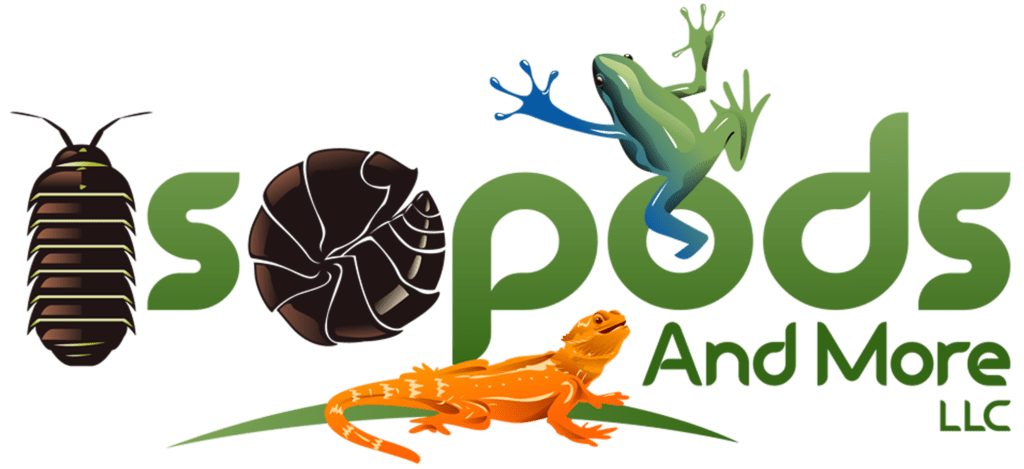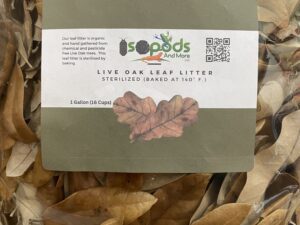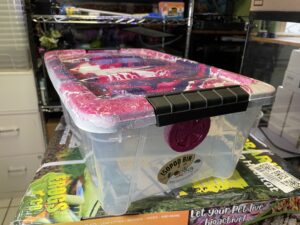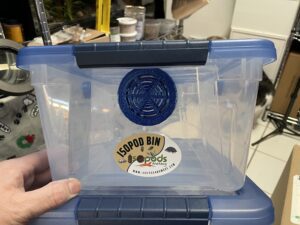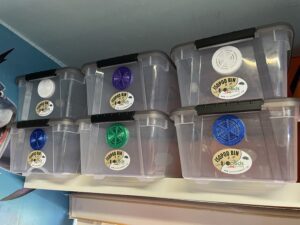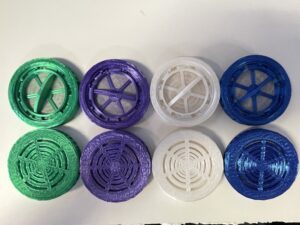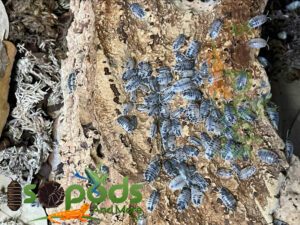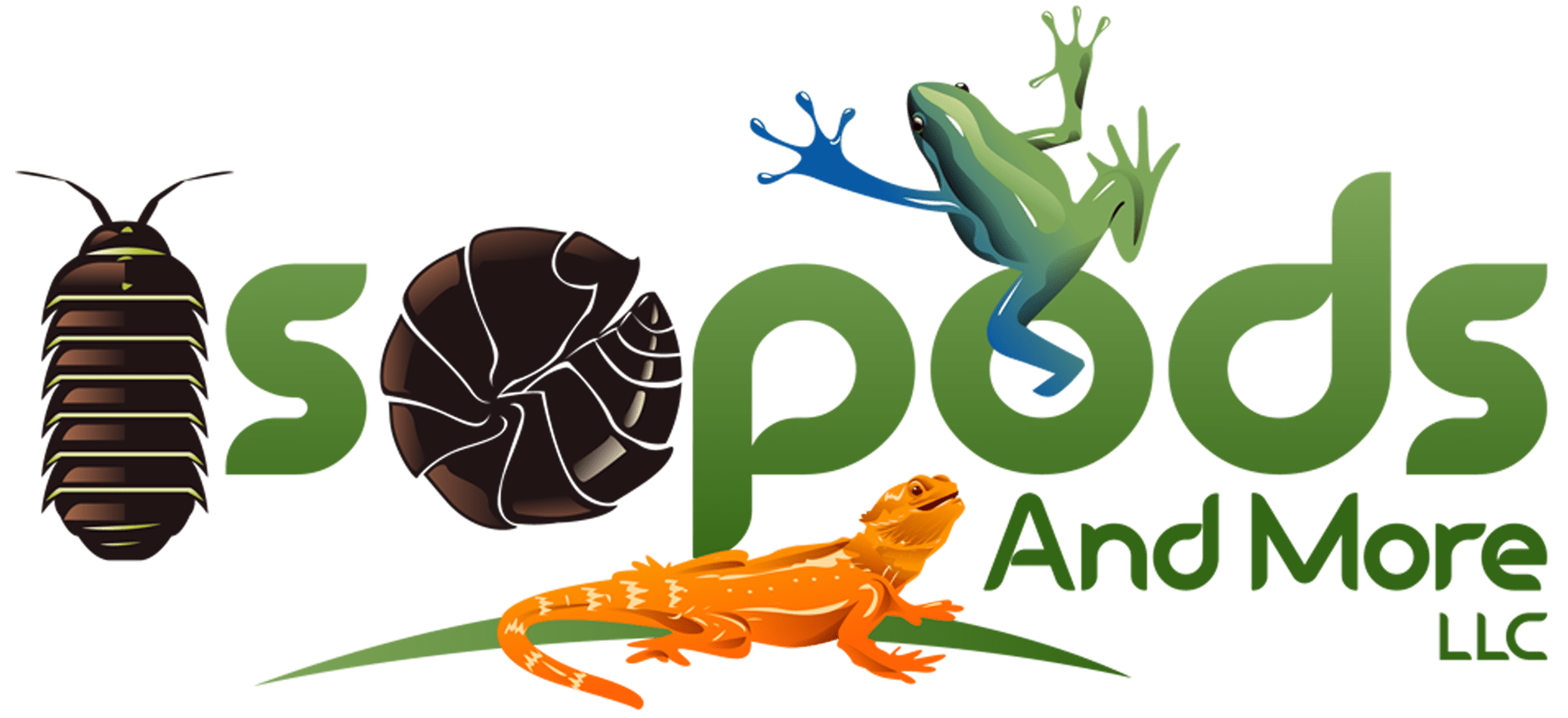In the fascinating world of bioactive enclosures, isopods play a crucial role that often goes unseen. These tiny creatures, also known as woodlice or pill bugs, may seem insignificant initially, but their impact is truly remarkable. Isopods are commonly used in bioactive enclosures for their ability to break down organic matter and improve soil quality. Their voracious appetite for decaying plant material and waste helps to maintain a healthy ecosystem, as they serve as nature’s very own recycling crew. As we delve deeper into the intricate relationship between isopods and bioactive enclosures, we uncover a world of symbiotic synergy, where these humble creatures are the unsung heroes of a thriving environment.
Creating a Bioactive Enclosure
Substrate Selection
When creating a bioactive enclosure, the first step is to select the appropriate substrate. The substrate serves as the foundation for the enclosure ecosystem, providing a medium for plants to thrive and microfauna to live. I think it’s essential to choose a substrate suitable for the specific needs of the plants and isopods you plan to house in the enclosure. Common substrates used in bioactive sections include coconut coir, sphagnum moss, and a mixture of organic matter such as leaf litter and topsoil. Please research the specific substrate requirements of your chosen plants and isopods to ensure a healthy and thriving enclosure.
Plant and Decor Selection
Selecting the right plants and decorations for your bioactive enclosure is crucial for creating a natural and aesthetically pleasing environment. Choose plants that are compatible with the needs of your isopods, considering factors such as light requirements, humidity levels, and growth habits. It is recommended to include a variety of plant species to create a diverse and exciting habitat. Additionally, incorporating natural decorations such as rocks, logs, and branches can provide hiding spots and climbing opportunities for plants and isopods. The goal is to create a realistic and enriching environment that mimics the natural habitats of the isopods.
Microfauna Introduction
Introducing microfauna, such as isopods, is an essential component of a bioactive enclosure. Isopods, also known as woodlice or pill bugs, play a vital role in maintaining the balance and health of the enclosure ecosystem. They act as nature’s clean-up crew, feeding on decaying organic matter and helping to decompose waste. In addition to their waste management abilities, isopods also provide numerous benefits for plants and contribute to pest control. Carefully consider the species of isopods you introduce, as different species have varying behaviors and requirements.
The Importance of Isopods
Isopods, often underappreciated, are a vital component of bioactive enclosures. Their role as decomposers and detritivores is crucial in breaking down organic matter and recycling nutrients within the ecosystem. Isopods have a unique feeding habit of consuming decaying plant material, dead insects, and animal waste. This ensures that waste is not allowed to accumulate and provides a vital service in maintaining a clean and healthy environment for plants and other inhabitants of the enclosure. Furthermore, isopods contribute to the overall biodiversity and ecological balance of the section, making them a valuable addition to any bioactive setup.
Isopods: Nature’s Clean-up Crew
Feeding Habits
Isopods have a diverse diet, consisting mainly of decaying plant material, dead insects, and animal waste. They are efficient scavengers, constantly foraging through the substrate for food. Isopods have mouthparts designed for grinding and consuming decomposing matter, allowing them to break down complex organic compounds into simpler forms. This feeding behavior not only helps maintain the cleanliness of the enclosure but also aids in nutrient cycling within the ecosystem.
Waste Decomposition
One of the primary functions of isopods in bioactive enclosures is waste decomposition. By consuming decaying matter and organic waste, isopods prevent the accumulation of waste materials that can lead to foul odors and the growth of harmful bacteria. Their constant activity ensures the enclosure remains clean and free from potential health hazards. Isopods play a vital role in breaking down waste, contributing to the overall health and stability of the enclosure ecosystem.
Benefits for Plants
Isopods provide several benefits for plants in a bioactive enclosure. As they consume decaying plant material, they help to recycle nutrients and make them available for plant uptake. Isopods also aid soil aeration through burrowing activities, improving root development and nutrient absorption. Additionally, their constant movement through the substrate helps to break up compacted soil, creating a more favorable environment for plant growth. By contributing to the nutrient cycle and improving soil quality, isopods promote the overall health and vitality of the plants within the enclosure.
Controlling Pest Population
Another advantage of incorporating isopods into a bioactive enclosure is their ability to control pest populations. Isopods feed on pest eggs, larvae, and even tiny pests themselves. This natural form of pest control can help prevent infestations and reduce the need for harmful chemical pesticides. By introducing isopods, you can create a self-sustaining ecosystem where pests are kept in check, benefiting both the plants and other inhabitants of the enclosure.
Different Species of Isopods
Powder Blue Isopods
Powder Blue Isopods (Porcellionides pruinosus) are a common choice for bioactive enclosures due to their vibrant blue coloration and hardy nature. They are excellent decomposers and thrive in a variety of environments. Powder Blue Isopods are medium-sized, making them suitable for enclosures of various sizes. They are known for their rapid reproduction rates, making them an excellent choice for those looking to establish a quickly growing isopod population.
Dwarf White Isopods
Dwarf White Isopods (Trichorhina tomentosa) are tiny isopods that are highly efficient cleaners. They are known for their voracious appetite and ability to consume large amounts of decaying matter relative to their size. Dwarf White Isopods are commonly used in smaller enclosures or as part of a diverse isopod community. Their small size and constant activity make them a valuable addition to any bioactive setup.
Giant Canyon Isopods
Giant Canyon Isopods (Armadillidium maculatum) are a larger species sought after for their unique appearance and behavior. They feature striking patterns on their exoskeleton, resembling a canyon landscape. Giant Canyon Isopods are excellent decomposers and thrive in more humid environments. Their larger size makes them easily visible in the enclosure and adds a visually interesting element to the overall aesthetic.
Zebra Isopods
Zebra Isopods (Armadillidium pulchellum) are known for their black and white striped pattern, which gives them their name. They are medium-sized isopods that prefer moderately humid environments. Zebra Isopods are active, social creatures that enjoy burrowing and exploring their surroundings. They are often chosen for their attractive appearance and ability to contribute to the overall biodiversity of the enclosure.
Caring for Isopods in Bioactive Enclosures
Optimal Temperature and Humidity
Proper temperature and humidity levels are essential for the health and well-being of isopods in a bioactive enclosure. Different species have specific temperature and humidity requirements, so it is necessary to research and provide suitable conditions for the isopods you choose. Generally, isopods prefer temperatures ranging from 65°F to 75°F (18°C to 24°C) and humidity levels between 70% and 90%. Monitoring these parameters and making necessary adjustments will ensure your isopods thrive in their environment.
Providing Hiding Spots
Isopods are nocturnal creatures that seek shelter during the day. Providing adequate hiding spots within the enclosure ensures their comfort and security. This can be achieved by including various natural decorations such as rocks, logs, and pieces of bark. These hiding spots not only provide a sense of security for the isopods but also create a visually appealing habitat. Could you make sure there are enough hiding spots available to accommodate the entire isopod population within the enclosure?
Proper Feeding and Supplementation
Isopods are opportunistic feeders and will happily consume a variety of organic matter found in their enclosure. However, it is essential to supplement their diet with appropriate food sources. Feeding them a balanced diet consisting of decaying plant material, vegetables, and commercially available isopod food will ensure they receive the necessary nutrients to thrive. The substrate can also be enriched with calcium carbonate and other mineral supplements to support their growth and reproduction.
Monitoring Population
Regularly monitoring the population of isopods in your bioactive enclosure is essential to ensure their numbers remain balanced with the available resources. Isopods reproduce rapidly under favorable conditions, which can lead to overcrowding within the section. If the population becomes too large, it may be necessary to remove some isopods or provide additional space in the form of a larger enclosure. Conversely, if the population declines, it may indicate unfavorable conditions or a lack of suitable resources, which should be addressed promptly.
Selecting Isopods for Different Bioactive Enclosures
Terrestrial Bioactive Enclosures
Terrestrial bioactive enclosures are the most common type designed for land-dwelling animals and plants. When selecting isopods for a terrestrial enclosure, it is vital to consider the specific habitat requirements of the chosen isopod species, as well as the needs of the other inhabitants. Isopods such as Powder Blue Isopods and Dwarf White Isopods are commonly used in terrestrial setups due to their adaptability and compatibility with a wide range of enclosures.
Aquatic Bioactive Enclosures
Aquatic bioactive enclosures are specifically designed for marine animals and plants. While isopods are primarily terrestrial creatures, some species do well in semi-aquatic environments. When creating an aquatic or semi-aquatic bioactive enclosure, it is crucial to choose isopods that can tolerate water conditions and are not solely dependent on land. Marine isopods, such as the Giant Canyon Isopods, can be a suitable choice for these enclosures.
Semi-Aquatic Bioactive Enclosures
Semi-aquatic bioactive enclosures provide a combination of land and water areas for the inhabitants. This type of habitat requires isopods that can thrive in both aquatic and terrestrial environments. Species such as Zebra Isopods are well-suited for semi-aquatic enclosures due to their ability to adapt to varying humidity levels and preference for moderate moisture. As always, it is essential to research the specific requirements of the chosen isopod species to ensure they are compatible with the enclosure.
Isopods as Decomposers and Detritivores
Recycling Organic Matter
Isopods play a vital role in the recycling of organic matter within a bioactive enclosure. Their ability to consume decaying plant material and waste products allows them to break down complex organic compounds into simpler forms. By feeding on and breaking down organic matter, isopods accelerate the decomposition process, releasing nutrients back into the ecosystem. Recycling organic matter is essential for maintaining a healthy and balanced enclosure.
Nutrient Cycling
Isopods are critical players in the nutrient-cycling process within a bioactive enclosure. As they consume decaying matter, they release nutrients in a more readily available form for plants and other organisms. The nutrients are cycled through the isopods’ waste, which helps fertilize the soil and promotes plant growth. This nutrient cycling contributes to the overall health and productivity of the enclosure, creating a self-sustaining ecosystem.
Breaking Down Dead Matter
One of the main tasks of isopods in a bioactive enclosure is to break down dead matter. Whether dead plants, animals, or even feces, isopods play a crucial role in decomposing and reducing these materials. By breaking down dead weight, isopods prevent the accumulation of organic waste and minimize the risk of harmful bacteria or fungi proliferating within the enclosure. Their efficient waste management keeps the section clean and helps maintain a healthy environment for all inhabitants.
Natural Pest Control with Isopods
Preventing Pest Infestations
Isopods provide a natural form of pest control within bioactive enclosures. By feeding on pest eggs, larvae, and even tiny pests themselves, isopods help prevent pest infestations from occurring. Their presence in the enclosure creates a balanced ecosystem where pest populations are kept in check. By reducing the likelihood of infestations, isopods contribute to the overall health and well-being of the plants and other inhabitants of the enclosure.
Feeding on Pest Eggs and Larvae
Isopods have an appetite for pest eggs and larvae, making them valuable allies in pest control. Many pests lay their eggs within the soil or on plant surfaces, and isopods actively search for and consume these eggs. By directly targeting pest eggs and larvae, isopods help break the reproductive cycle of pests, reducing their numbers and preventing further infestations. This natural form of biological control helps maintain a healthy and pest-free environment without the need for harmful chemical pesticides.
Reducing the Need for Pesticides
By incorporating isopods into your bioactive enclosure, you can significantly reduce the need for chemical pesticides. Isopods act as biological pest control, naturally regulating pest populations without harmful chemicals. This not only benefits the overall health of the enclosure but also minimizes the risk of exposure to toxic pesticides for both humans and the inhabitants of the enclosure. Isopods offer a sustainable and environmentally friendly alternative for pest management in bioactive setups.
Isopods and Biodiversity
Promoting Ecological Balance
Isopods play a crucial role in promoting ecological balance within bioactive enclosures. By forming part of a diverse community of microfauna, they contribute to the overall biodiversity of the ecosystem. The presence of isopods helps create a more stable and resilient habitat as they interact with other organisms and contribute to various ecological processes. By promoting environmental balance, isopods support the long-term health and sustainability of the enclosure.
Introducing Microflora
Isopods indirectly contribute to the introduction and spread of beneficial microflora within bioactive enclosures. As they move through the substrate and feed on decaying matter, they inadvertently distribute microorganisms such as bacteria and fungi. These microflora are essential in nutrient cycling, decomposition, and overall soil health. Isopods within the enclosure help foster a diverse microbial community, enhancing the overall ecosystem and contributing to its functionality.
Interactions with Other Microfauna
Isopods form part of a complex web of interactions within bioactive enclosures. They interact with other microfauna, such as springtails and earthworms, creating a dynamic ecosystem. These interactions can range from competition for resources to mutualistic relationships, where different organisms benefit from each other’s presence. Isopods actively contribute to the overall health and functionality of the enclosure by participating in these intricate interactions, further emphasizing the importance of their presence in bioactive setups.
Expanding Your Isopod Collection
Breeding Isopods
Breeding isopods in captivity is a rewarding endeavor that allows you to establish and expand your isopod collection. Different isopod species have varying reproductive habits and requirements, so it is essential to research the specific breeding requirements of the species you are working with. Providing suitable conditions, such as proper temperature, humidity, and food sources, is crucial for successful breeding. By breeding isopods, you can ensure a sustainable population within your bioactive enclosure and potentially share your surplus with other enthusiasts.
Introducing New Species
Once you have gained experience with isopods, consider introducing new species to your bioactive enclosure. It is essential to thoroughly research the specific requirements and compatibility of any new species before submitting them. Consider factors such as temperature, humidity, and the potential impact on the existing ecosystem. Introducing new species can add diversity and enrich the overall ecosystem of the enclosure, but it must be done thoughtfully to avoid disruptions or negative impacts on the existing inhabitants.
Maintaining Genetic Diversity
Maintaining genetic diversity within your isopod collection is crucial for the long-term health and adaptability of the population. Inbreeding can lead to genetic issues, such as reduced fertility and increased susceptibility to disease. To maintain genetic diversity, it is recommended to periodically introduce new individuals or colonies from different sources or breeders. This helps to refresh the gene pool and prevent the adverse effects of inbreeding. By actively managing the genetic diversity of your isopod collection, you can ensure the long-term success and health of your bioactive enclosure.
Isopods in Education and Research
Studying Isopod Behavior
Isopods provide an intriguing subject of study in the field of animal behavior. Their complex behaviors, such as navigation, mating rituals, and social interactions, offer unique opportunities for observation and experimentation. Studying isopod behavior can provide insights into animal behavior and ecology. Whether in educational settings or research laboratories, isopods provide a fascinating and accessible model organism for studying fundamental biological principles.
Ecological Studies
Bioactive enclosures with isopods offer an exceptional opportunity for ecological studies. By creating controlled ecosystems, researchers can explore various ecological interactions, nutrient cycling processes, and the dynamics of species populations. Isopods act as key players within these systems, providing valuable insights into the role of decomposers and detritivores in ecosystem functioning. Studying the ecological dynamics of bioactive enclosures can enhance our understanding of natural ecosystems and contribute to conservation efforts.
Educational Demonstrations
Isopods are often used as educational resources to teach students about ecology, biology, and environmental science. Their accessible nature and interesting behaviors suit them for classroom demonstrations, hands-on activities, and projects. By observing and interacting with isopods, students can learn about ecosystem dynamics, decomposition, nutrient cycling, and the interconnectedness of organisms within an ecosystem. Isopods make learning about biology and ecology engaging and memorable, inspiring a lifelong interest in science and nature.
In conclusion, isopods are crucial in bioactive enclosures, contributing to waste decomposition, nutrient cycling, pest control, and overall ecosystem health. By carefully selecting and caring for isopods, you can create a thriving and self-sustaining enclosure that promotes biodiversity and ecological balance. Whether in educational, research, or recreational contexts, isopods provide a fascinating and rewarding subject of study and observation. Incorporating isopods into bioactive enclosures offers a unique opportunity to appreciate and learn from the natural behaviors and interactions of these remarkable creatures.
